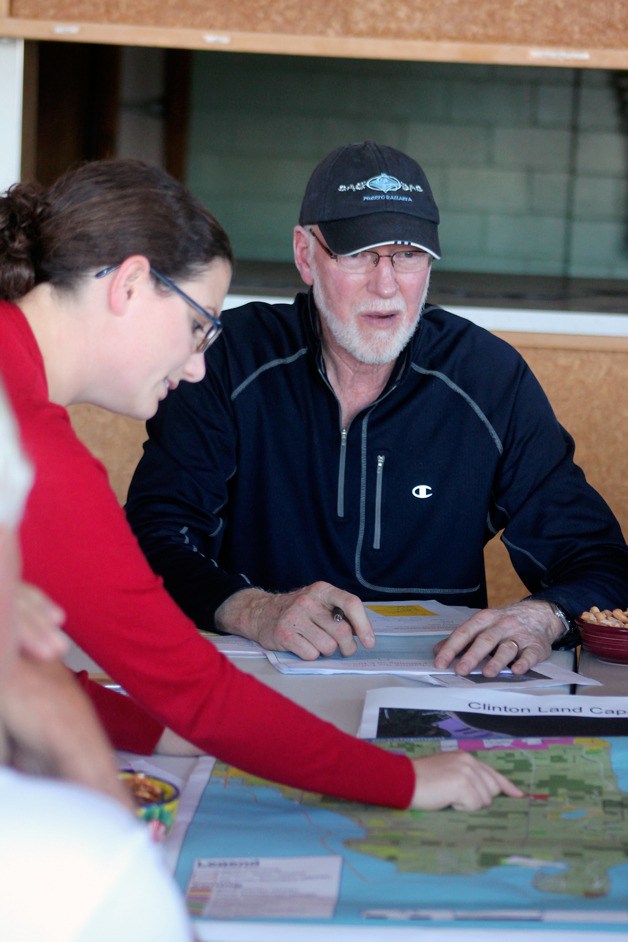A county planner met with members of the Clinton Community Council this week to discuss two upcoming public meetings about the Island County Comprehensive Plan update.
The document guides growth and zoning changes over the next 20 years. It will take effect in 2016 and last until 2036, with some periodic changes and updates.
One of the major concerns for the dozen or so people who are helping plan the October and November meetings was potential confusion or sidetracking of area residents. They didn’t want people to mistake the document’s purpose, and they didn’t want to lose people’s focus to the ongoing concerns about sewers or vacant storefronts in the commercial core near the highway and ferry terminal.
“They’re not going to fill a shopping center, they’re not going to put feet on the ground,” said council member Doug Hofius. “Those are all private-sector issues.”
Pointing to one color map showing development density and capacity, several council members asked questions, illustrating the very thing they were hoping to avoid at the upcoming meetings.
“It’s not saying anything is likely to develop, it’s just saying where there’s land,” said Amanda Almgren, a long-range planner with Island County Planning and Community Development.
The first Clinton area meeting about the comprehensive plan, commonly referred to as the comp plan, is set for Oct. 8. The second meeting is Nov. 5.
At that first gathering, council members and planning staff hope to explain what the document has done and discuss what presently exists in Clinton. Some council members, who are all volunteers and not elected officials, pointed to several areas that were zoned commercial but can’t have any commercial use because of limited access.
“It’s goofy … It’s something we should explore,” said Helen Price Johnson, a council member and an Island County commissioner.
That kind of identification will be crucial to the comp plan update, Almgren said.
One of the defining traits of the update will be that the Clinton ZIP code’s projected population growth over 20 years is only 2 percent. Jack Lynch, president of the council and a retired community planner, said such a small change means the existing housing capacity is sufficient.
“There isn’t this big demand coming,” Lynch said.
“There’s more than adequate capacity,” he added.
That contradicts what council member Maury Hood, who is a Clinton Water and Sewer District commissioner, has seen with Boeing’s expansion. He said a friend relocated from Wichita, Kansas to Marysville when one of the plants closed there, only to find it takes him an hour to drive to the Everett plant. Hood said the commute from Clinton to Boeing’s Everett site was less, and that could lead to an unexpected boom for South Whidbey.
“You plan, and then conditions always change,” said Price Johnson, responding to his concerns.
The second meeting in November will cover where Clinton should head, and any needed planning and preparations.
The council’s hope is to have a strong showing of Clinton residents at the meetings to have better representation of the area in the document.



